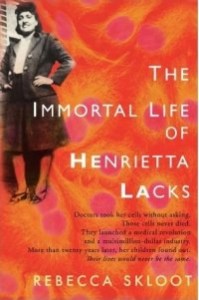 KidLitCon 2011 was all about CONNECTION and AUTHENTICITY. It was invigorating like this killer mural I passed in Seattle.
KidLitCon 2011 was all about CONNECTION and AUTHENTICITY. It was invigorating like this killer mural I passed in Seattle.
(Forgive the cross-posting with VivaScriva.com, but I couldn’t decide which blog needed this post more!)
Unlike many writers’ conferences, which are tinged with an air of desperation, the path to publication was NOT the focus. Instead KidLitCon attendees are primarily bloggers focused on connecting authors and their books to readers. Not as marketers (though some authors assume that every blog is a lightly veiled form of advertisement) but as matchmakers devoted to getting the right book in the right hands. Need proof? Take the passionate conversation with Colleen Mondor about how her review of a book she loved could “best serve the book.” Inspiring!
It was deeply satisfying for me to meet others (in person, since I had connected with many via Twitter) who are committed to the tripartite nature of story-telling. There must be a story, a teller, and an audience. CONNECTION—I love it!
Another key take home for me was that these connections had to be AUTHENTIC. Truth starts with the story. The panel on diversity (Lee Wind, Sarah Stevenson, Brent Hartinger,Sara Ryan, Justina Chen) reminded us that the heart of the story is inhabited by authentic, non-stereotypical characters whatever their ethnicity and orientation. Writers (no matter their ethnicity or orientation) must get it right for truth to infuse the story.
Much discussion on authenticity circled around how we review books. Bloggers make many choices about their own process and the key is transparency. If you only discuss books you like (book recommendations vs. critical book reviews) then say so on your blog. If you’re taking on the crucial job of true book reviews, remember that critique is not a litany of failures.
Authenticity was also a theme of Holly and Shiraz Cupala’s presentation on DIY marketing. They urged authors to focus on giving value to bloggers, potential readers, book store buyers, and librarians. We shouldn’t be trying to trick people into switching tooth paste brands. We should be trying to fill a need. Shiraz shared a quote from Simon Sinek: “People don’t buy what you do. They buy why you do it.” Isn’t that another way of saying we all want the heart of the story?
Perhaps the best gift of KidLitCon 2011 was the synergy with Angel Punk. Devon Lyon, Matthew Wilson, Jake Rossman, and I presented a panel entitled The Future of Transmedia Storytelling: Angel Punk, Pottermore, and Skeleton Creek. (For those of you who weren’t there, transmedia tells interwoven but non-overlapping story lines through multiple forms of media. In our case, film, comics, novel, and online.) Transmedia is about CONNECTION because of fan participation in the story-telling process and because each form of media engages and unites a different set of fans. It was exciting to see the enthusiasm of other KidLitCon attendees for both our approach to story-telling and the heart of our story itself. (Thanks, you guys!)
I’m still flying high from KidLitCon 2011. I left with real, true, new friends—CONNECTION and AUTHENTICITY.


 For a story to work, and by work I mean, grab me by the throat and refuse to let me go, I must be fully invested in the characters. I want to fall in love, to believe in their reality to such a degree that if Eddard Stark walked through my door, I would say, “A mug of mead, Lord Stark?” not “Where’s the freaking costume party?”
For a story to work, and by work I mean, grab me by the throat and refuse to let me go, I must be fully invested in the characters. I want to fall in love, to believe in their reality to such a degree that if Eddard Stark walked through my door, I would say, “A mug of mead, Lord Stark?” not “Where’s the freaking costume party?”



 On Saturday, I’ll be telling this story during Havdalah services. I’ve modified it to make it work as a more active story-telling experience. I must say that I love this book. It’s a perfect way to get into the mood for Pesach!
On Saturday, I’ll be telling this story during Havdalah services. I’ve modified it to make it work as a more active story-telling experience. I must say that I love this book. It’s a perfect way to get into the mood for Pesach!